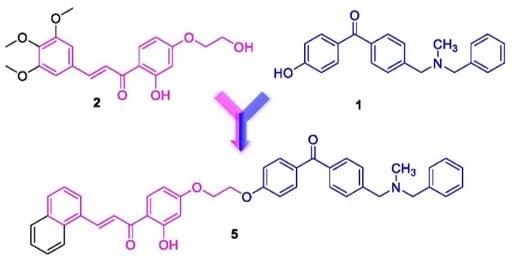Naturally Inspired Molecules as Multifunctional Agents for Alzheimer’s Disease Treatment
Abstract
:1. Introduction
Design Strategy
2. Results
2.1. Chemistry
2.2. Biological Evaluation
2.2.1. BACE-1 Inhibition
2.2.2. Neuroprotection
Neurotoxicity
In Vitro Cu(II) Chelation
Total Antioxidant Activity
Inhibition of Cu(II)-Mediated ROS Formation
2.3. Spectrophotometric Evaluation of Cu(II) Ion Complexation
3. Discussion
4. Materials and Methods
4.1. General Information
4.2. Chemistry
4.2.1. General Procedure for the Synthesis of 3–7, 9, 10 by Williamson Reaction
4.2.2. General Procedure for the Synthesis of Chalcones 2, 11, 12 by Claisen-Schmidt Reaction
4.2.3. General Procedure for the Synthesis of Flavanones 13, 14.
4.3. BACE-1 Inhibition: FRET Inhibition Assay
4.4. Cu(II) Chelating Assay
4.5. Cell Cultures
4.6. Determination of Neurotoxicity
4.7. Determination of Antioxidant Activity
4.8. Spectrophotometricdetermination of Cu(II) Chelation
Acknowledgments
Author Contributions
Conflicts of Interest
Abbreviations
| AD | Alzheimer’s disease |
| Aβ | amyloid β |
| APP | amyloid β protein precursor |
| BACE-1 | β-site APP cleaving enzyme-1 |
| BBB | blood brain barrier |
| Ch | chalcone |
| CNS | central nervous system |
| Fl | flavanone |
| FRET | fluorescence resonance energy transfer |
| MFCs | multifunctional compounds |
| NPs | natural products |
| NFT | neurofibrillary tangles |
| ROS | reactive oxygen species |
| SPs | senile plaques |
References
- Alzheimer’s Association. Alzheimer’s disease facts and figures. Alzheimers Dement. 2015, 11, 332–384. [Google Scholar]
- Geldenhuys, W.J.; Youdim, M.B.; Carroll, R.T.; Van der Schyf, C.J. The emergence of designed multiple ligands for neurodegenerative disorders. Prog. Neurobiol. 2011, 94, 347–359. [Google Scholar] [CrossRef] [PubMed]
- Cavalli, A.; Bolognesi, M.L.; Minarini, A.; Rosini, M.; Tumiatti, V.; Recanatini, M.; Melchiorre, C. Multi-target-directed ligands to combat neurodegenerative diseases. J. Med. Chem. 2008, 51, 347–372. [Google Scholar] [CrossRef] [PubMed]
- Naslund, J.; Haroutunian, V.; Mohs, R.; Davis, K.L.; Davies, P.; Greengard, P.; Buxbaum, J.D. Correlation between elevated levels of amyloid β-peptide in the brain and cognitive decline. JAMA 2000, 283, 1571–1577. [Google Scholar] [CrossRef] [PubMed]
- Hardy, J. Alzheimer’s disease: The amyloid cascade hypothesis: An update and reappraisal. J. Alzheimers Dis. 2006, 9, 151–153. [Google Scholar] [PubMed]
- Yang, L.B.; Lindholm, K.; Yan, R.; Citron, M.; Xia, W.; Yang, X.L.; Beach, T.; Sue, L.; Wong, P.; Price, D.; et al. Elevated β-secretase expression and enzymatic activity detected in sporadic Alzheimer disease. Nat. Med. 2003, 9, 3–4. [Google Scholar] [CrossRef] [PubMed]
- Silvestri, R. Boom in the development of non-peptidic β-secretase (BACE1) inhibitors for the treatment of Alzheimer’s disease. Med. Res. Rev. 2009, 29, 295–338. [Google Scholar] [CrossRef] [PubMed]
- Hong, L.; Koelsch, G.; Lin, X.; Wu, S.; Terzyan, S.; Ghosh, A.K.; Zhang, X.C.; Tang, J. Structure of the protease domain of memapsin 2 (β-secretase) complexed with inhibitor. Science 2000, 290, 150–153. [Google Scholar] [CrossRef] [PubMed]
- La Regina, G.; Piscitelli, F.; Silvestri, R. Synthetic strategies of nonpeptidic β-secretase (BACE1) inhibitors. J. Heter. Chem. 2009, 46, 10–17. [Google Scholar] [CrossRef]
- Rauk, A. The chemistry of Alzheimer’s disease. Chem. Soc. Rev. 2009, 38, 2698–2715. [Google Scholar] [CrossRef] [PubMed]
- DeToma, A.S.; Choi, J.-S.; Braymer, J.J.; Lim, M.H. Myricetin: A Naturally Occurring Regulator of Metal-Induced Amyloid-β Aggregation and Neurotoxicity. Chembiochem 2011, 12, 1198–1201. [Google Scholar] [CrossRef] [PubMed]
- Newman, D.J.; Cragg, G.M.; Snader, K.M. Natural products as sources of new drugs over the period 1981–2002. J. Nat. Prod. 2003, 66, 1022–1037. [Google Scholar] [CrossRef] [PubMed]
- Welsch, M.E.; Snyder, S.A.; Stockwell, B.R. Privileged scaffolds for library design and drug discovery. Curr. Opin. Chem. Biol. 2010, 14, 347–361. [Google Scholar] [CrossRef] [PubMed]
- Williams, R.J.; Spencer, J.P. Flavonoids, cognition, and dementia: Actions, mechanisms, and potential therapeutic utility for Alzheimer disease. Free Radic. Biol. Med. 2012, 52, 35–45. [Google Scholar] [CrossRef] [PubMed]
- Grazul, M.; Budzisz, E. Biological activity of metal ions complexes of chromones, coumarins and flavones. Coord. Chem. Rev. 2009, 253, 2588–2598. [Google Scholar] [CrossRef]
- Belluti, F.; Piazzi, L.; Bisi, A.; Gobbi, S.; Bartolini, M.; Cavalli, A.; Valenti, P.; Rampa, A. Design, synthesis, and evaluation of benzophenone derivatives as novel acetylcholinesterase inhibitors. Eur. J. Med. Chem. 2009, 44, 1341–1348. [Google Scholar] [CrossRef] [PubMed]
- Belluti, F.; Bartolini, M.; Bottegoni, G.; Bisi, A.; Cavalli, A.; Andrisano, V.; Rampa, A. Benzophenone-based derivatives: A novel series of potent and selective dual inhibitors of acetylcholinesterase and acetylcholinesterase-induced β-amyloid aggregation. Eur. J. Med. Chem. 2011, 46, 1682–1693. [Google Scholar] [CrossRef] [PubMed]
- Belluti, F.; De Simone, A.; Tarozzi, A.; Bartolini, M.; Djemil, A.; Bisi, A.; Gobbi, S.; Montanari, S.; Cavalli, A.; Andrisano, V.; et al. Fluorinated benzophenone derivatives: Balanced multipotent agents for Alzheimer’s disease. Eur. J. Med. Chem. 2014, 78, 157–166. [Google Scholar] [CrossRef] [PubMed]
- Morphy, R.; Kay, C.; Rankovic, Z. From magic bullets to designed multiple ligands. Drug Discov. Today 2004, 9, 641–651. [Google Scholar] [CrossRef]
- Belluti, F.; Rampa, A.; Piazzi, L.; Bisi, A.; Gobbi, S.; Bartolini, M.; Andrisano, V.; Cavalli, A.; Recanatini, M.; Valenti, P. Cholinesterase inhibitors: Xanthostigmine derivatives blocking the acetylcholinesterase-induced β-amyloid aggregation. J. Med. Chem. 2005, 48, 4444–4456. [Google Scholar] [CrossRef] [PubMed]
- Mancini, F.; De Simone, A.; Andrisano, V. β-Secretase as a target for Alzheimer’s disease drug discovery: An overview of in vitro methods for characterization of inhibitors. Anal. Bioanal. Chem. 2011, 400, 1979–1996. [Google Scholar] [CrossRef] [PubMed]
- Stachel, S.J.; Coburn, C.A.; Steele, T.G.; Jones, K.G.; Loutzenhiser, E.F.; Gregro, A.R.; Rajapakse, H.A.; Lai, M.T.; Crouthamel, M.C.; Xu, M.; et al. Structure-based design of potent and selective cell-permeable inhibitors of human β-secretase (BACE-1). J. Med. Chem. 2004, 47, 6447–6450. [Google Scholar] [CrossRef] [PubMed]
- De Vincenzo, R.; Ferlini, C.; Distefano, M.; Gaggini, C.; Riva, A.; Bombardelli, E.; Morazzoni, P.; Valenti, P.; Belluti, F.; Ranelletti, F.O.; et al. In vitro evaluation of newly developed chalcone analogues in human cancer cells. Cancer Chemother. Pharmacol. 2000, 46, 305–312. [Google Scholar] [CrossRef] [PubMed]
- Tarozzi, A.; Marchesi, A.; Cantelli-Forti, G.; Hrelia, P. Cold-storage affects antioxidant properties of apples in caco-2 cells. J. Nutr. 2004, 134, 1105–1109. [Google Scholar] [PubMed]
- Říha, M.; Karlíčková, J.; Filipský, T.; Macáková, K.; Hrdina, R.; Mladěnka, P. Novel method for rapid copper chelation assessment confirmed low affinity of d-penicillamine for copper in comparison with trientine and 8-hydroxyquinolines. J. Inorg. Biochem. 2013, 123, 80–87. [Google Scholar] [CrossRef] [PubMed]
- Kim, D.O.; Lee, K.W.; Lee, H.J.; Lee, C.Y. Vitamin C equivalent antioxidant capacity (VCEAC) of phenolic phytochemicals. J. Agric. Food Chem. 2002, 50, 3713–3717. [Google Scholar] [CrossRef] [PubMed]
- Tarozzi, A.; Bartolini, M.; Piazzi, L.; Valgimigli, L.; Amorati, R.; Bolondi, C.; Djemil, A.; Mancini, F.; Andrisano, V.; Rampa, A. From the dual function lead AP2238 to AP2469, a multi-target-directed ligand for the treatment of Alzheimer’s disease. Pharmacol. Res. Perspect. 2014, 2, e00023. [Google Scholar] [CrossRef] [PubMed]
- Kasprzak, M.M.; Erxleben, A.; Ochocki, J. Properties and applications of flavonoid metal complexes. RSC Adv. 2015, 5, 45853–45877. [Google Scholar] [CrossRef]
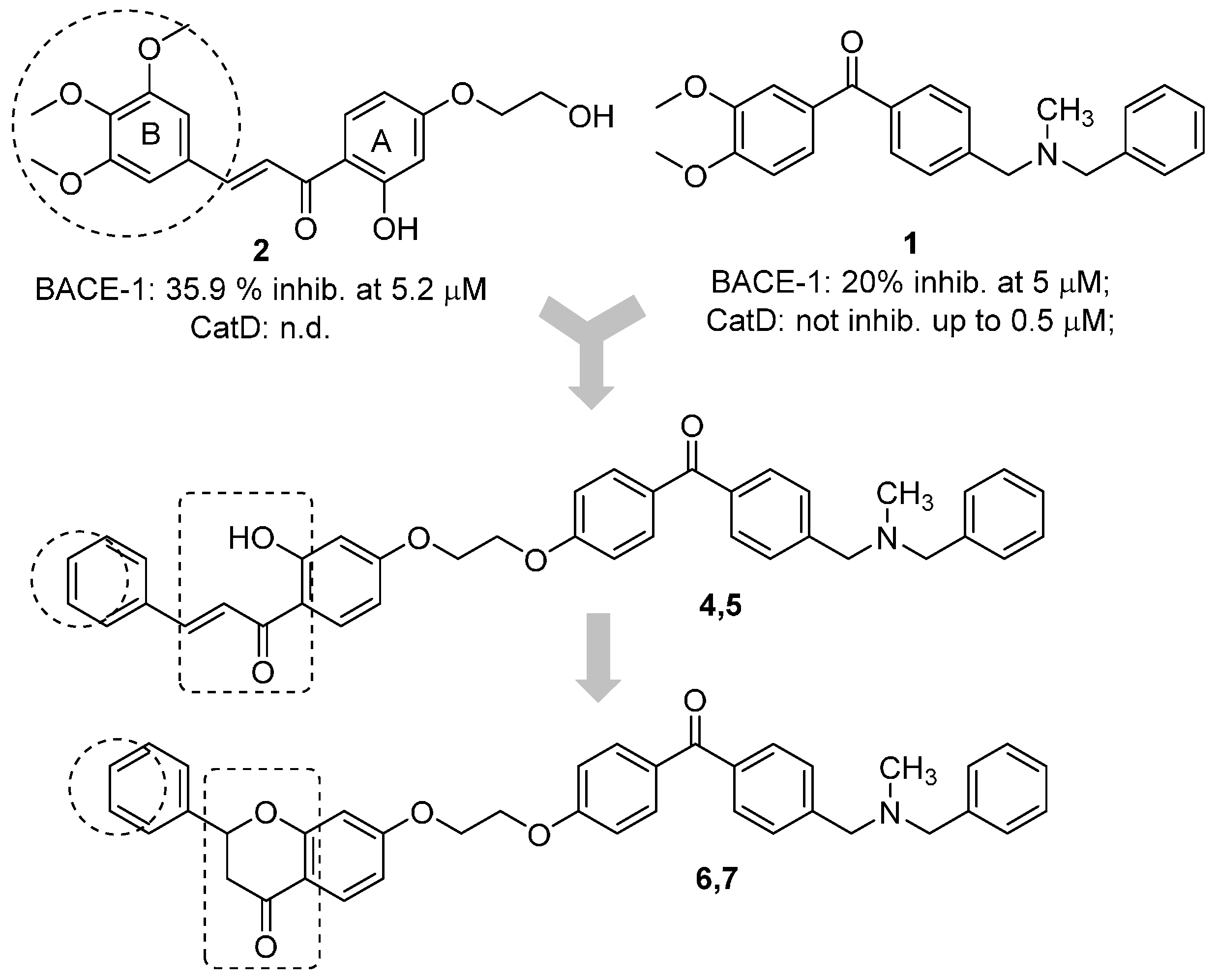
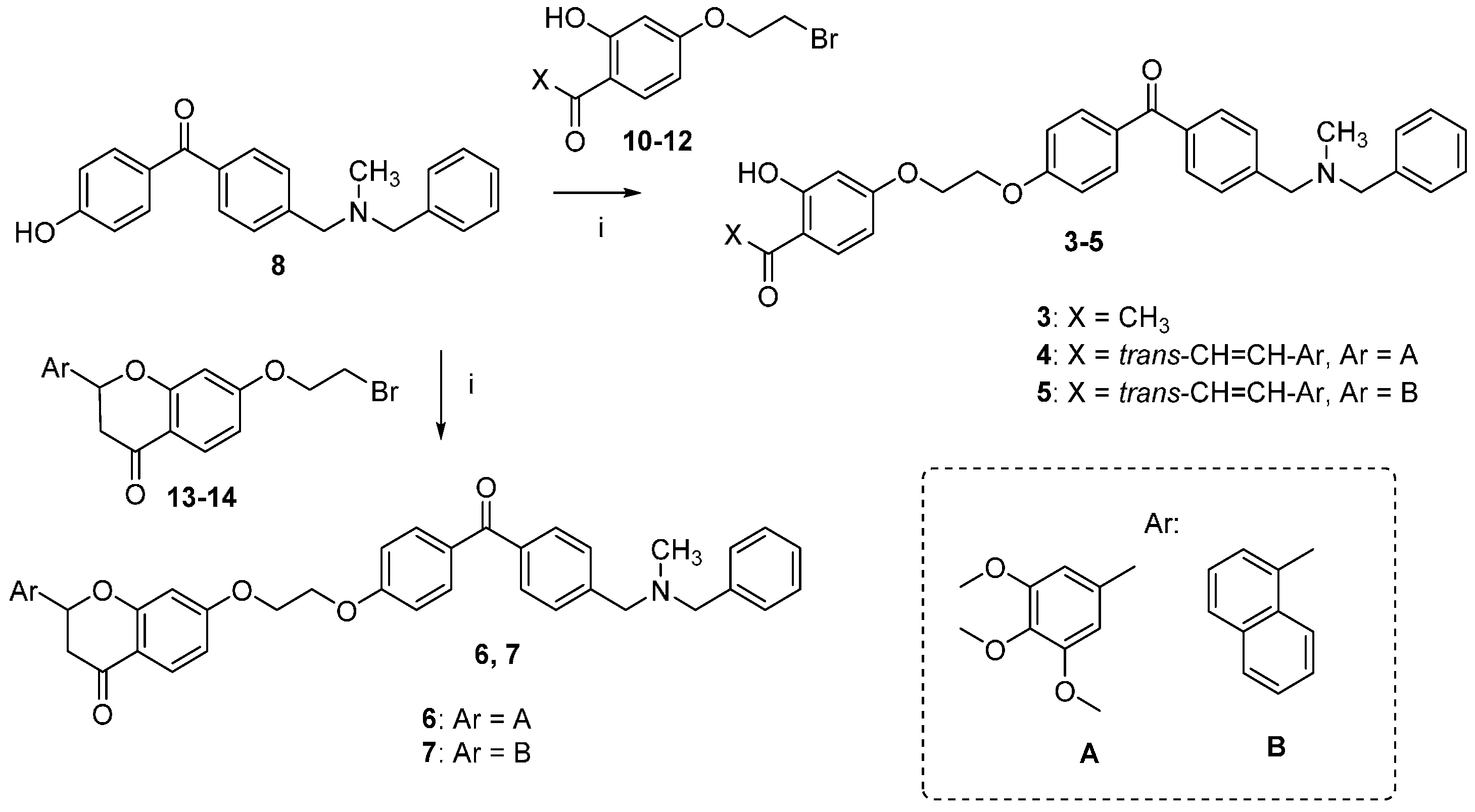
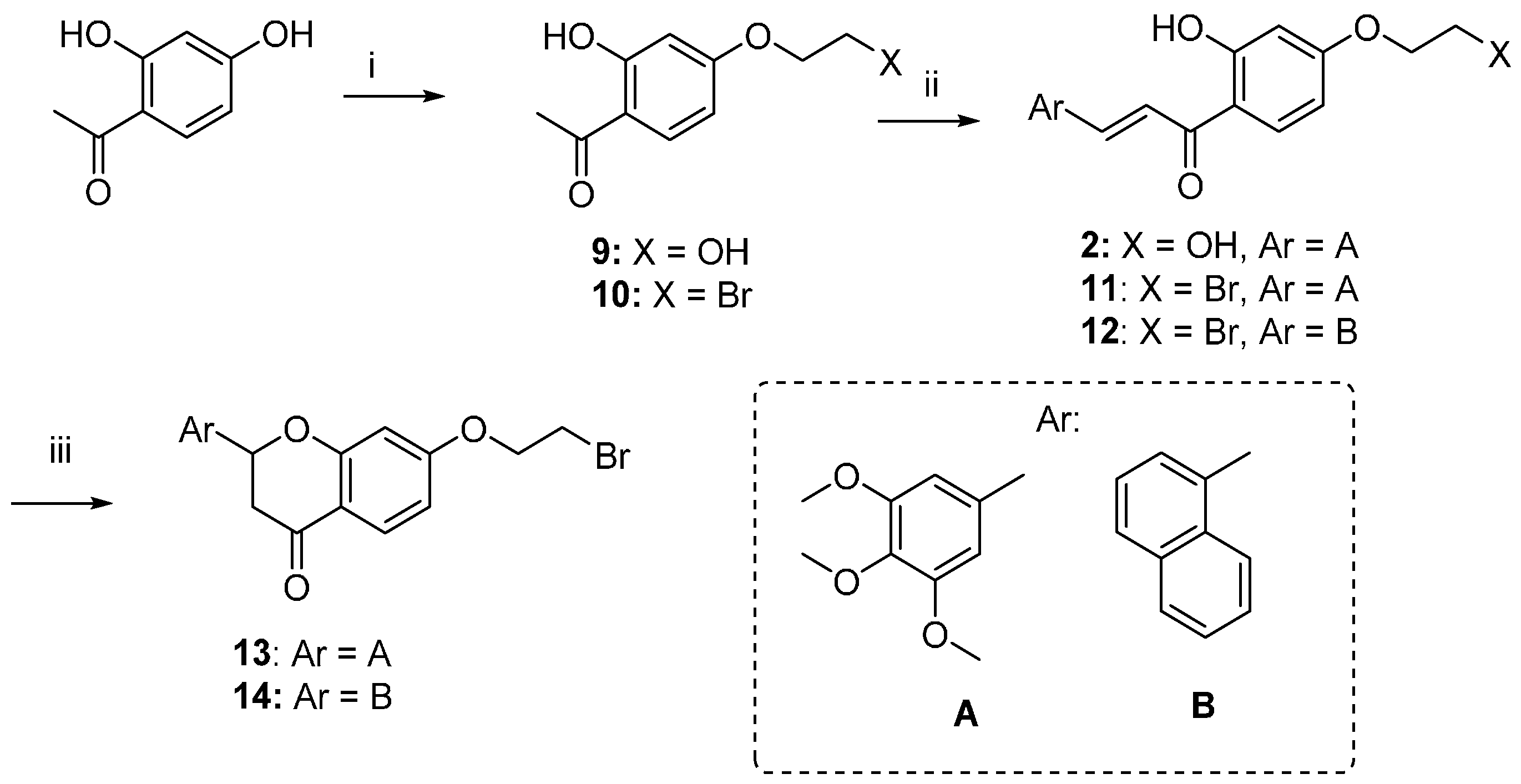
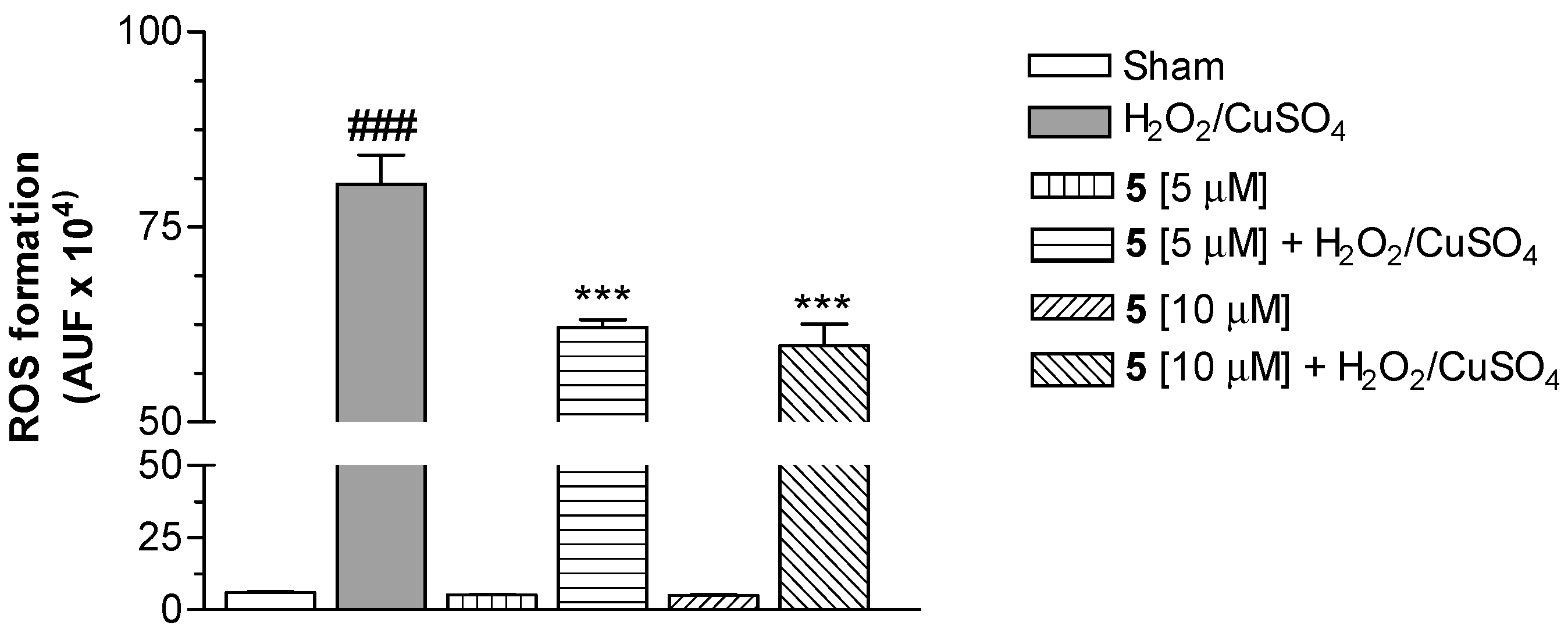
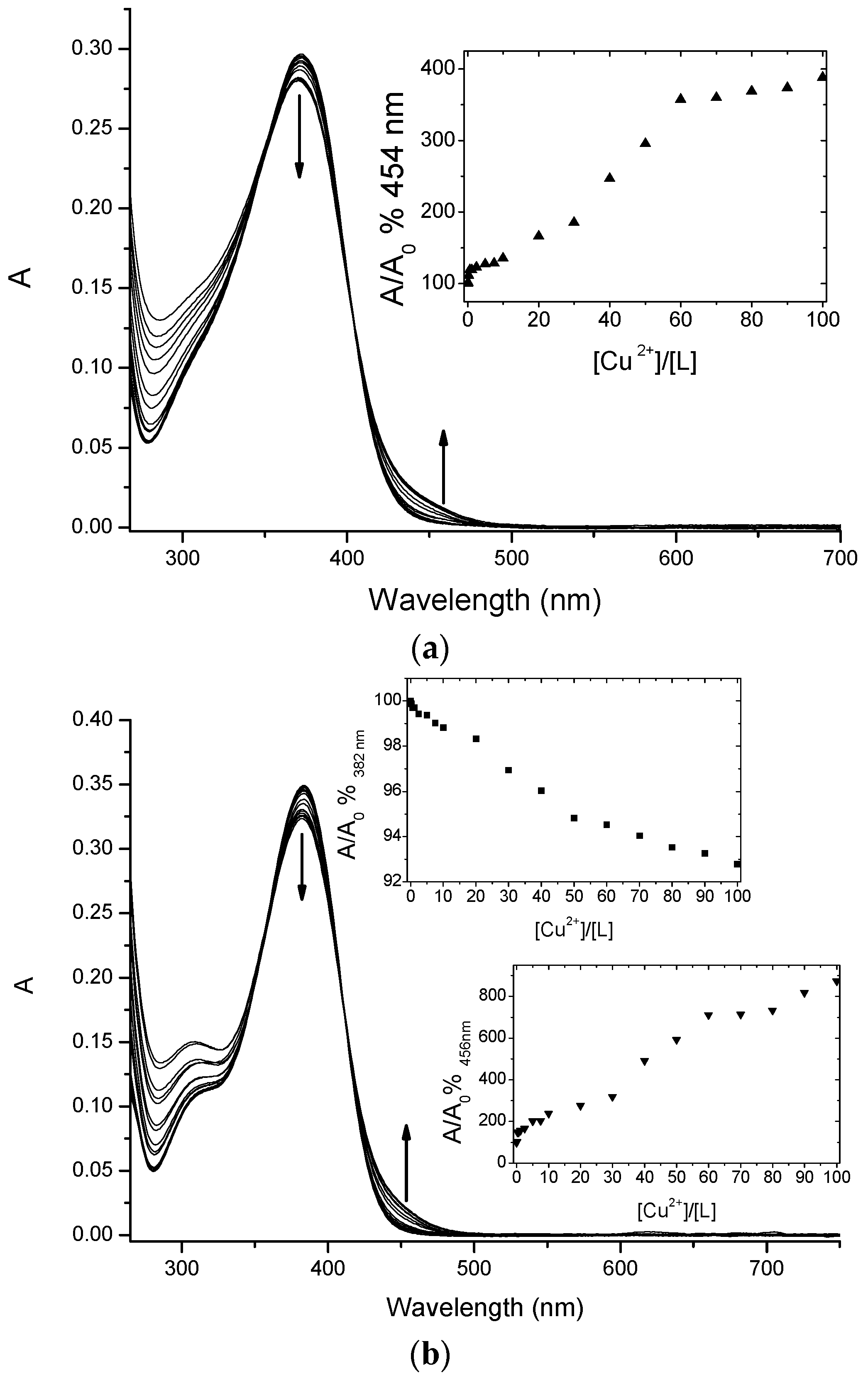
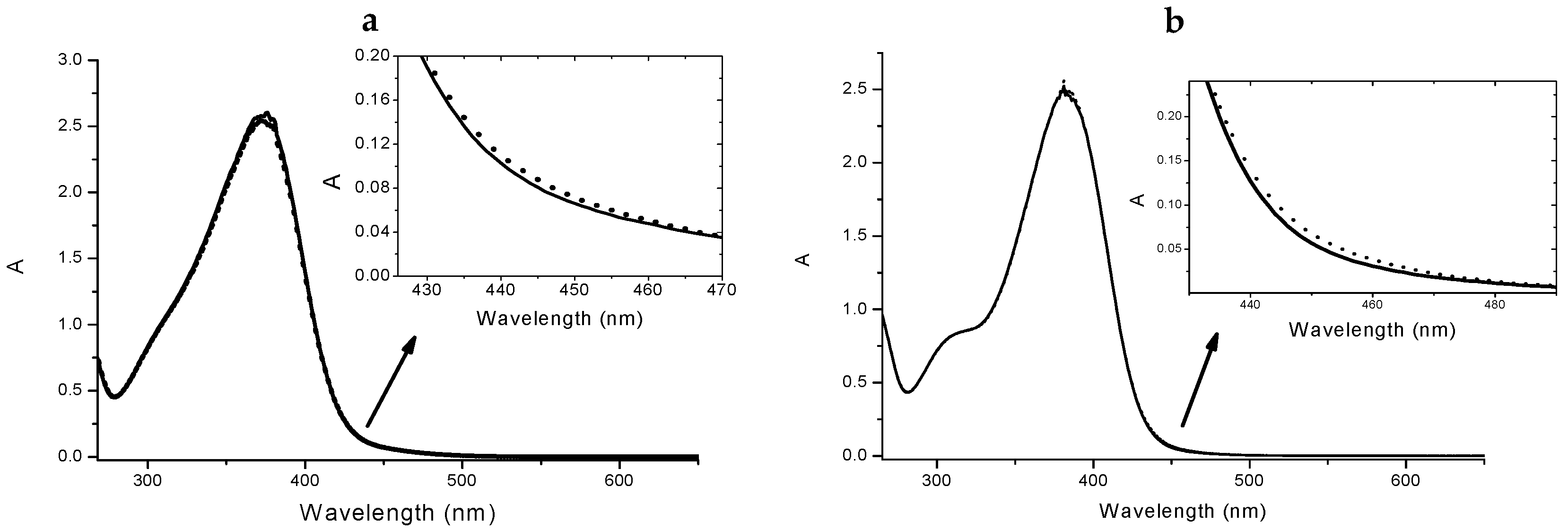
| Compound | R | hBACE-1 Inhibition IC50 (μM) a |
|---|---|---|
| 3 |  | 3.18 ± 0.21 |
| 4 |  | 1.06 ± 0.15 |
| 5 |  | 4.02 ± 0.29 |
| 6 | 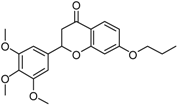 | 1.56 ± 0.23 |
| 7 |  | 3.97 ± 0.33 |
| Inhibitor IV b | 0.02 ± 0.00 |
| Compound | Cell Viability IC50 (µM) a | Cu(II)-Chelating Activity (%) b |
|---|---|---|
| 3 | 10.89 ± 1.63 | 5.37 ± 0.16 |
| 4 | 23.66 ± 3.54 | 15.07 ± 1.32 |
| 5 | n.d c | 19.73 ± 0.30 |
| Na2EDTA | - | 17.10 ± 1.44 |
© 2016 by the authors. Licensee MDPI, Basel, Switzerland. This article is an open access article distributed under the terms and conditions of the Creative Commons Attribution (CC-BY) license ( http://creativecommons.org/licenses/by/4.0/).
Share and Cite
Rampa, A.; Tarozzi, A.; Mancini, F.; Pruccoli, L.; Di Martino, R.M.C.; Gobbi, S.; Bisi, A.; De Simone, A.; Palomba, F.; Zaccheroni, N.; et al. Naturally Inspired Molecules as Multifunctional Agents for Alzheimer’s Disease Treatment. Molecules 2016, 21, 643. https://doi.org/10.3390/molecules21050643
Rampa A, Tarozzi A, Mancini F, Pruccoli L, Di Martino RMC, Gobbi S, Bisi A, De Simone A, Palomba F, Zaccheroni N, et al. Naturally Inspired Molecules as Multifunctional Agents for Alzheimer’s Disease Treatment. Molecules. 2016; 21(5):643. https://doi.org/10.3390/molecules21050643
Chicago/Turabian StyleRampa, Angela, Andrea Tarozzi, Francesca Mancini, Letizia Pruccoli, Rita Maria Concetta Di Martino, Silvia Gobbi, Alessandra Bisi, Angela De Simone, Francesco Palomba, Nelsi Zaccheroni, and et al. 2016. "Naturally Inspired Molecules as Multifunctional Agents for Alzheimer’s Disease Treatment" Molecules 21, no. 5: 643. https://doi.org/10.3390/molecules21050643
APA StyleRampa, A., Tarozzi, A., Mancini, F., Pruccoli, L., Di Martino, R. M. C., Gobbi, S., Bisi, A., De Simone, A., Palomba, F., Zaccheroni, N., & Belluti, F. (2016). Naturally Inspired Molecules as Multifunctional Agents for Alzheimer’s Disease Treatment. Molecules, 21(5), 643. https://doi.org/10.3390/molecules21050643









